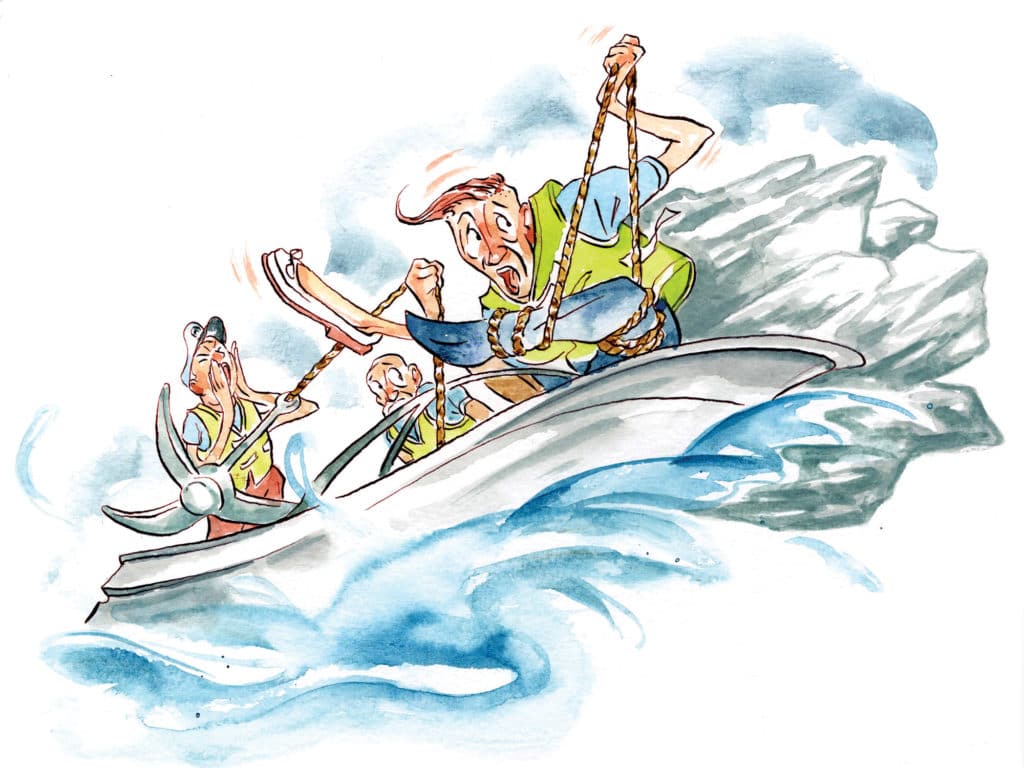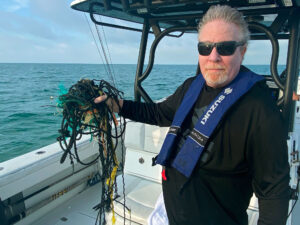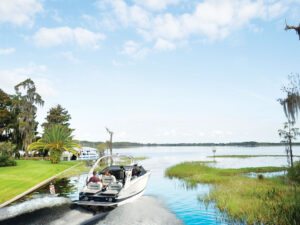
There’s a viral video making the rounds on the internet depicting a boat that lost power, then drifted onto the rocks at a coastal inlet. While from afar it’s always hard to say what went wrong, and often harder to accurately state what might have saved the boat, the incident prompted a discussion among our team that led to writing this piece about the dual importance of keeping your anchor ready to go and your crew ready to anchor. The ability to stay in one place will often save the day.
First, make sure your anchor is ready to deploy. Drifting toward rocks is not the time to be untangling hockled rode. If your boat is fitted with a windlass, make sure the rode runs free and the windlass works as designed. Some models are free fall and others power out. And whether the anchor is manually deployed or dropped by a windlass, go out to deep water once a year and stream out all the rode—literally—to ensure there are no snags.
Next, inspect your rode for chafe on the line, excessive rust on the chain, and the integrity of knots and shackles. If you anchor frequently, shackle pins can become “wasp-waisted” and weakened. Shackle pins can also back out if not seized in place.
Read Next: Staying Calm Prevents a Boating Emergency
Your crew also needs to be ready. This means the people who regularly boat with you of adult age, or at least adult size. Going forward might be necessary even if there is a windlass. Have your crew walk forward and familiarize themselves with the footfalls and handholds your boat provides. Make sure they know they might have to kneel on the hatch before the latch will turn. Be sure they know which switch is up and which is down. Do all this and more in calm practice sessions; if you need to anchor quickly in an emergency, it might be rough, and seconds might count. So, your crew needs to have it down before the event.
We can’t say for sure whether a quickly deployed anchor would have saved the boat in the Instagram video. We weren’t there. We can say that the ability to quickly set anchor is the mark of an accomplished boater who’s in possession of an important tool in his boating-safety toolkit.
Wanted: Your Stories
Share your boating mistakes and mishaps so that your fellow boaters might learn from your experience. Send us your first-person accounts, including what went wrong, what you’d do differently, your name and your city, to editor@boatingmag.com and use “ILAB” in the subject line. If your story is selected for publication, we’ll send you a $100 West Marine Gift Card!”









